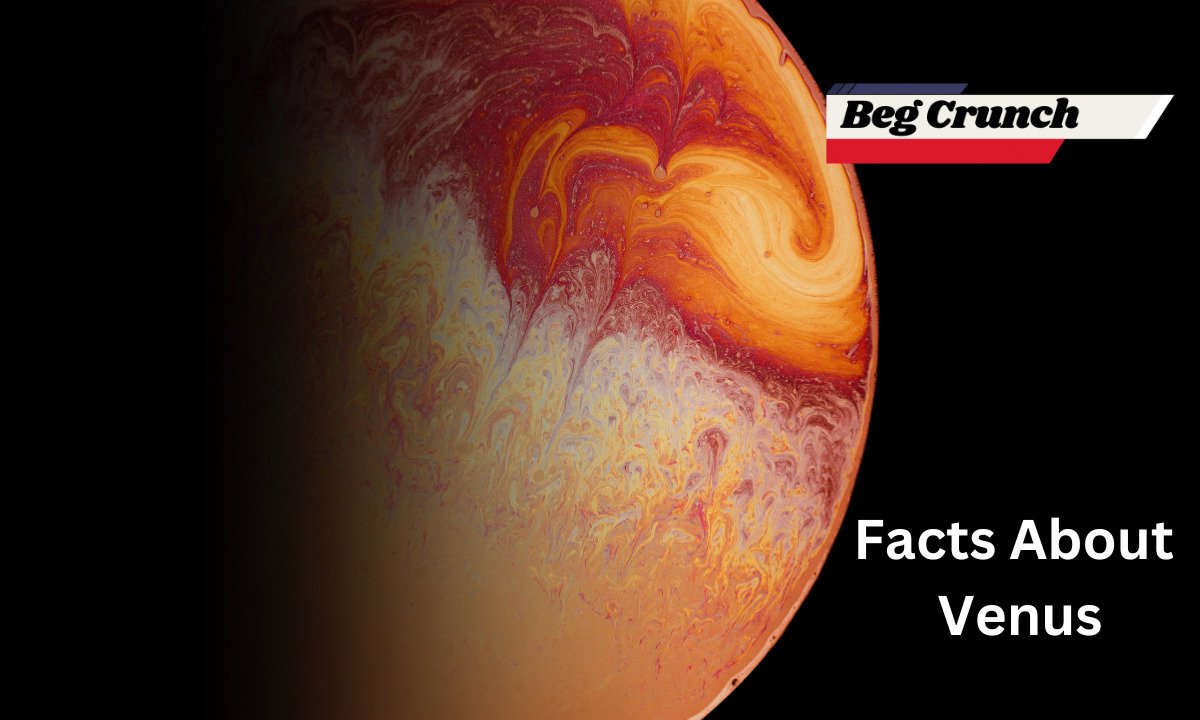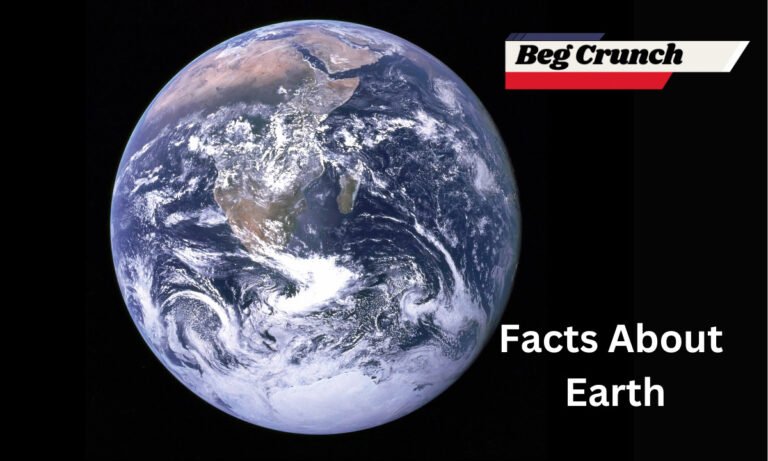Facts About Venus
Venus, often referred to as Earth’s “sister planet,” is a captivating celestial body that shares similarities with our planet while also presenting intriguing differences. Its scorching surface, thick atmosphere, and unique characteristics make it a subject of fascination for astronomers and space enthusiasts alike. In this comprehensive article, we’ll uncover a range of intriguing facts about Venus, exploring its geological features, atmospheric composition, historical significance, and the mysteries that continue to pique our curiosity.
Venus Unveiled: Geology and Surface Features
In the annals of the solar system, Venus emerges as a world of extremes, an enigmatic sphere where the forces of heat, geology, and cosmic impacts interweave to craft a unique planetary identity. This exploration delves into the scorching surface conditions, the volcanic landscapes that grace its terrain, and the traces of cosmic collisions that mark its crust.
Harsh Surface Conditions: Venus’ Fiery Furnace
Venus stands as a testament to the cosmos’ ability to craft environments of unparalleled harshness. Its average surface temperature of approximately 465 degrees Celsius (869 degrees Fahrenheit) is a symphony of torment, rendering it the hottest planet within our solar system.
The root of this blistering inferno is intertwined with the very air that envelops the planet. Venus’s thick atmosphere, a concoction primarily of carbon dioxide, orchestrates a cosmic greenhouse effect of remarkable intensity. Sunlight penetrates this veil, warming the surface, but the subsequent re-radiation of heat is trapped, creating an atmospheric oven that leaves no respite from the fiery embrace.
Volcanic Landscapes: The Forge of Venus’ Surface
Venus’s surface is a realm of volcanic grandeur, a canvas painted with vast plains of volcanic rock that testify to the planet’s tumultuous geological history. Over 1,600 major volcanoes stud this arid terrain, casting their towering shadows across the rocky expanse. Among these, a diverse array of volcanic structures emerges—shield volcanoes that unfurl gently,
stratovolcanoes that pierce the sky with their majestic cones, and sprawling volcanic complexes that hint at the cataclysms that have shaped Venus’ surface.
The volcanic fervor etched into Venus’ landscape is a tapestry of eruptions that have sculpted its contours over eons. Volcanism on Venus, often manifesting as vast lava plains, signifies an active world of molten forces beneath the surface. While the mechanisms driving Venus’ volcanic activity remain a subject of inquiry, these volcanic vistas serve as a testament to the dynamic forces that continue to shape the planet.
Venusian Impact Craters: Cosmic Testimonies
Amidst Venus’ volcanic dominance, the scars of cosmic collisions also grace its surface. Impact craters punctuate the landscape, bearing witness to a history of encounters with space-borne projectiles. Despite Venus’ fiery atmosphere, its surface is not impervious to these cosmic clashes. The planet’s dense atmosphere, though offering a protective shield, does not eliminate impacts. Instead, smaller objects are often slowed and disintegrated before they reach the surface, leaving behind a record of their fleeting existence in the form of craters.
These impact craters paint a mosaic of cosmic events, each a testament to the relentless motion of celestial bodies within the solar system. While Venus’ volcanic activity may seem to dominate its narrative, these cosmic collisions remind us of the intricate interplay between planetary bodies and the cosmos at large.
A Closer Look at Venus’s Atmosphere
Venus’s thick atmosphere is a crucial element in understanding its unique characteristics and climate. Here are some intriguing facts about its atmospheric composition:
- Carbon Dioxide Dominance
- Venus’s atmosphere is composed mostly of carbon dioxide (about 96.5%), which contributes to its extreme greenhouse effect.
- The concentration of carbon dioxide is over 90 times higher than that of Earth’s atmosphere.
- The Runaway Greenhouse Effect
- The thick atmosphere traps heat, creating a runaway greenhouse effect that leads to Venus’s scorching surface temperatures.
- This phenomenon has transformed the planet into a searing hellscape, despite its similar size to Earth.
Historical Significance and Early Observations
Venus’s significance extends beyond its geological and atmospheric traits, as it has been observed and interpreted by various cultures throughout history:
- Morning and Evening Star
- Venus is often referred to as the “Morning Star” when it is visible before sunrise and the “Evening Star” when it appears after sunset.
- Ancient civilizations, including the Maya and Greeks, closely tracked Venus’s movements in the sky.
- Space Exploration Milestones
- The first successful spacecraft to land on Venus was the Soviet Venera 7 probe in 1970, providing valuable data about the planet’s surface and atmosphere.
- Numerous missions have followed, including orbiters, landers, and flybys, contributing to our understanding of Venus’s composition and environment.
Mysteries and Future Exploration
Despite decades of study, Venus continues to hold mysteries that intrigue scientists and space agencies:
- The Venusian Winds
- Venus’s upper atmosphere features super-rotational winds that circle the planet much faster than its rotation.
- The exact mechanisms driving these powerful winds remain a subject of ongoing research.
- Potential for Volcanic Activity
- Some evidence suggests that Venus’s volcanoes may still be active, raising questions about the planet’s geologic processes.
- Future missions aim to uncover whether ongoing volcanic activity contributes to Venus’s dynamic surface.
FAQs
Here are answers to some frequently asked questions about Venus:
Q1: Could humans live on Venus?
Living on Venus’s surface is incredibly challenging due to its extreme heat and crushing atmospheric pressure. However, some propose the idea of colonizing Venus’s upper atmosphere where conditions are more moderate.
Q2: Does Venus have moons?
Venus does not have any moons. The reasons for this absence are still under investigation by planetary scientists.
Q3: Does Venus have seasons like Earth?
Venus’s rotation is slow and retrograde (opposite to most planets), causing it to have a unique day-night cycle, but its lack of a significant axial tilt results in minimal seasonal variations.
Q4: What are the prospects for future Venus missions?
Several space agencies, including NASA and ESA, have proposed future missions to Venus to study its surface, atmosphere, and geological processes in more detail.
Unveiling Venus’s Enigma
Venus, with its extreme conditions and intriguing characteristics, remains a captivating object of scientific study. Its enigmatic qualities continue to fuel our curiosity and drive space exploration missions to unveil its secrets. As we strive to understand Venus’s complex geology, atmosphere, and evolution, we inch closer to solving the mysteries that make this “sister planet” both a challenge and an opportunity for scientific discovery.
Conclusion
Venus, a planet defined by extremes, emerges as a cosmic theater of heat, geology, and celestial encounters. Its surface conditions are a symphony of fiery torment, shaped by a thick atmosphere and the greenhouse effect. The volcanic landscapes that span its domain showcase the dynamic forces that have crafted its contours over eons. Amidst this volcanic fervor, impact craters stand as cosmic testaments, bearing witness to the planet’s cosmic interactions. Venus’ story is one of unearthing the mysteries of its scorching surface, unveiling the cataclysms that shape its terrain, and peering into its cosmic collisions—an exploration that reveals the unique drama of an enigmatic world within our solar system.







